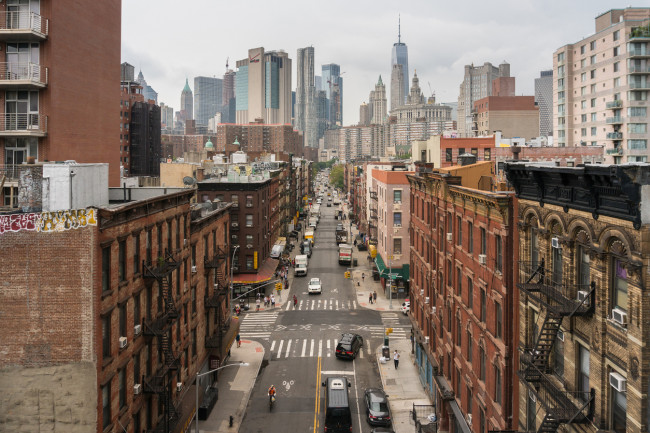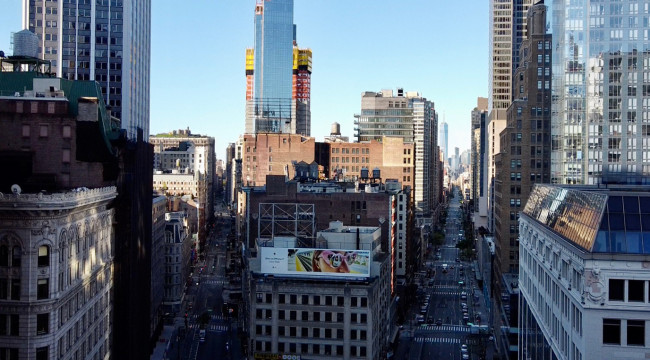The incredible shrinking NYC apartment deal: Why your new lease feels more expensive now

Apartments feel more expensive these days and harder to find as a result of fewer concessions and lower inventory—although rents are still below what they were in 2019.
iStock
New renters are not getting much of a break when they sign a lease these days. The Covid discount is practically gone as rents climb on a monthly basis—even though they are still below what they were in 2019.
One of the reasons apartments seem more expensive is that the deals have dried up. Concessions are harder to find—those include free months and landlord-paid broker fees that made renting a NYC apartment suddenly more affordable during the height of the pandemic. Also making renting more painful these days: The number of available apartments has plunged—in Manhattan inventory was down 44 percent last month compared to a year ago, according to the Elliman Report for Manhattan, Brooklyn, and Queens rental markets.
Demand for new leases from returning New Yorkers, coming on the heels of an influx during the pandemic of deal-seeking renters—has emboldened landlords to withhold concessions and raise rents.
But demand slowed sharply last month, following a slight dip in August—a result of companies pushing off office reopenings into the late fall and winter, or the new year, because of concerns over the Delta variant.
In Manhattan, the number of new lease signings rose year over year for the 12th straight month, but at a more modest rate of 4.4 percent. Compared to August, lease signings were down 36.1 percent
“It’s the first time in 12 months new leasing has not set a record,” says Jonathan Miller, president and CEO of appraisal firm Miller Samuel and author of the report. Every month since last October leasing activity has set a record either for that specific month or for any month. “This is the first time that has not happened,” Miller says.
Typically July and August are big months for leasing—but that didn’t happen this year either and Miller blames Delta.
“September was the month corporate America was supposed to be back,” Miller says. “But now we’re looking at callbacks spread out into 2022.”
In Manhattan, the net effective median rent in September ($3,216) rose year over year by 5.9 percent but fell short of the same period in 2019 ($3,411).
The share of new Manhattan leases that came with a concession in September was 30.4 percent—the lowest rate in nearly four years and a drop from August when it was 37 percent. In September 2020, that share was 55.4 percent. The average amount of concessions landlords are offering is also getting smaller—it was 1.8 months in September compared to two months in September 2020.
New leases in Brooklyn saw the largest year over year increase for September since 2008 with an increase of 4.5 percent over September 2020. However, new leases were down by 28.3 percent if you compare them to August.
Net effective rent in Brooklyn has increased month over month for two of the past three months. In September it was $2,781, was up 2.2. percent over August.
The share of new Brooklyn leases with concessions was down to 28.2 percent in September—a year ago it was 48 percent.
Over in northwest Queens, the increase in new lease signings more than doubled compared to a year ago but fell short of setting a record for the first time in six months, the report said. Compared to the previous month, new leases were down by 30.1 percent.
Net effective median rent in Queens for September was $2,618, an increase of 7.2 percent over September 2020.
Covid discount ‘a thing of the past’
Corcoran released September rental market reports for Manhattan and Brooklyn and Gary Malin, COO of Corcoran, notes that as New York City rents rebound from their pandemic lows, “Covid discounts are largely a thing of the past.”
He attributes the increase in rents in Manhattan and Brooklyn from August to “simple supply and demand,” noting that the number of available apartments in both boroughs has “plummeted.”
“The speed of the turn-around has been truly remarkable,” he says, adding that “a competitive rental market is a powerful sign that our city is back.”
MNS also unveiled its September rental market reports for Manhattan, Brooklyn, Queens, and the Bronx. The reports drill down to look at rents by apartment size and neighborhood—and compare doorman to non-doorman buildings in Manhattan. Findings include: The largest monthly decreases were for doorman two bedrooms in Harlem, doorman studios and two bedrooms in Gramercy.
You Might Also Like































